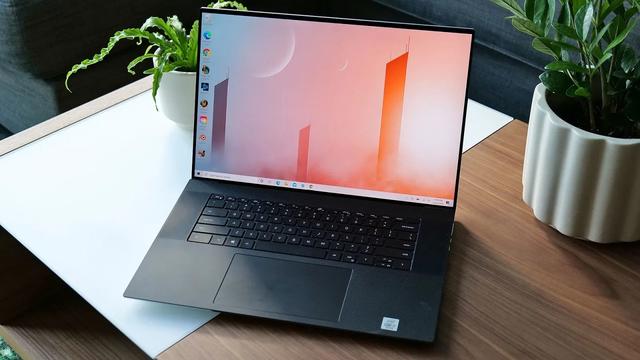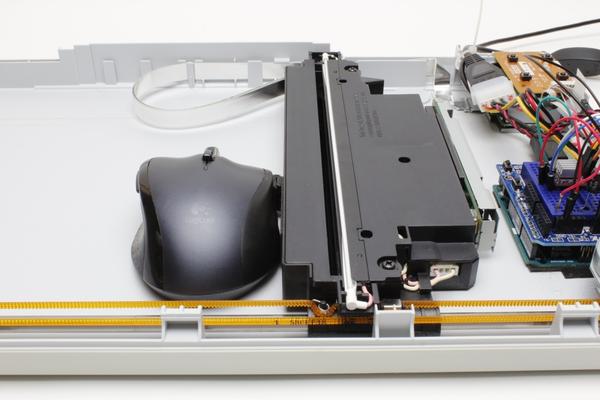Dell XPS 17 Review: Big Screen Laptop Again!
It's not as simple as saying that the smaller the world, the bigger the better. Gadgets, in particular, vary greatly in the tastes of each user, depending on their lifestyle and usage. However, there are times when trends come and go. So now, I'm worried about the signs that the big screen wave is about to come again on laptops. So, the US Gizmodo editorial department reviewed Dell's XPS 17. After all, having more options is good for consumers!
A few years ago, many notebook PC manufacturers quietly dropped 17-inch models from their lineups (with the exception of some gaming devices). Apple's 17-inch MacBook Pro and Dell's XPS 17. However, over time, the bezel has been made thinner, the power efficiency has been improved, and the 17-inch that has evolved is now making a comeback. It's thin and light, but the screen is big, nice!
Last year, Apple released the larger 16-inch MacBook Pro. As if to follow suit, this year Dell brought back the 17-inch. 2020 was a unique year, but honestly, I think it's the perfect time to bring back big-screen laptops.
Dell XPS 17 9700
What is this? : Dell's flagship terminal 17 inches.
Price: From $ 1,350 (about 139,000 yen) (review terminal is $ 2,750 = about 283,000 yen).
Good points: Beautiful design, small webcam, lots of USB-C ports, built-in SD card reader, great keyboard, bright display, dongle included.
Unfortunately: I wish the GPU options were a little better. The quality of the webcam is so-so. Quite expensive depending on options.
There are advantages unique to 17 inches
Although the XPS 17 is a comeback, the design is almost the same as the basic XPS. The body is designed with tapered edges, the top lid is silver aluminum, and the center is a carbon fiber dock. It weighs about 2.5 kg and measures about 37.5 x 24.8 x 1.95 cm. At 17 inches, it should be big, but you won't notice how big it is until you put it on top of the XPS 15. What's the wonder of the XPS 17? Phantom? mirage? A surprisingly large screen when opened, and a surprisingly slim screen when closed. Considering that the last time we saw the XPS 17 was in 2012, it weighed around 3.6kg, so the evolution is amazing.

In terms of exterior design, I like that it has many ports. It has four USB-C ports (Thunderbolt 3 compatible), a headphone jack, and an SD card reader. For those of you who wished you had HDMI and USB-A, don't worry. You can use the dongle that comes with it.
When you open it, the display is empty. The display comes in a variety of options, from 1900x1200 non-touch to 4K UHD+. Large display with thin bezels. An ultra-compact webcam and IR camera module sit on top of the display. The IR camera supports Windows Hello face authentication login. The webcam is 720p HD, but I honestly wish the quality was a little better.
At the bottom is a keyboard and large stereo speakers. There are 2.5W woofers and 1.5W tweeters on each side that deliver rich, room-filling sound. The keyboard is a classic, or a classic keyboard with elasticity and sharpness. It's not perfect, but it's a straight keyboard with a solid feel that seems to be what you'd expect it to be. Below that is a touch pad with a large presence of about 15 x about 9 cm. More than enough space for cursor manipulation, and gesture control is perfect. Don't worry, even though it's this big, there's plenty of room to put your wrist on either side.
The only thing that bothers me is Dell's decision not to include the numeric keypad found on 17-inch gaming PCs. It may be a part, but there are people who are crying over this decision. However, looking at the overall balance, I think it was a good decision to install a large speaker without a numeric keypad.
The model reviewed this time is an upgraded version of the 4K 3,840 x 2,400 touchscreen. The brightness is over 450nits, and I think it's the highest class of laptops with LCD panels in terms of brightness and richness of colors. If you're thinking of buying an XPS 17 for photo/video editing purposes, I highly recommend upgrading from the entry-level FHD+ to a 4K screen. The aspect ratio is 16:10. If you have a large notebook, it would be nice to have more vertical space.
High performance for creators
Not to mention the large screen, the performance is no problem. The base is the 10th generation Intel Core i5-10300H CPU, but the upgraded version reviewed is the Core i7-10875H CPU. It's so fast. The result of the CPU rendering test in Blender is 4 minutes 40 seconds. This is a good result that shortened about 4 minutes from 8 minutes 33 seconds of MSI Creator 15 equipped with the same CPU. Similarly, the graphics performance of the XPS 17 was 6 minutes and 26 seconds in the Blender GPU test, beating the MSI Creator 15's 8 minutes and 36 seconds by 2 minutes. GPU is the same RTX 2060. This is a very nice and important factor for creators.
Also, I don't think I had a gaming PC in mind as a rival, but as a result, "Shadow of the Tomb Raider" was over 80fps at 1,080p, so it's good.
Battery life is sufficient for a device of this size. The result of the video continuous playback test is 8 hours 58 minutes. Two hours longer than the MSI Creatro 15 and one hour longer than HP's ZBook Create G7, which is great.
My only complaint is...
After a few weeks of use in my review, I have only one complaint about the XPS 17. It's the price. The basic entry-level model costs $1,350 with a 17-inch FHD+ screen, Core i5 CPU, 8GB of memory, 256GB of storage, and integrated graphics, but a few upgrades add up quickly. In fact, the model used in the review has been upgraded, with a 4K touchscreen, Core i7 10875H CPU, 32GB memory, 1TB SSD capacity, and RTX 2060 GPU for $2,750 (about 283,000 yen). The price has almost doubled. Even if you try to save memory and capacity, it will cost $ 2,450 (about 252,000 yen) when you choose the RTX 2060. For those who can afford to drop the GPU a little more, the $1,800 model of the GTX 1650 Ti may be a good balance.
Timing in 2020
Well, I think the XPS 17 will be released in 2020. In 2020, when everyday life has been turned upside down, people all over the world hope to return to normal life as soon as possible, but what is "normal"? I think. Many people are now working and learning remotely from home, but even if offices and schools are open again, will we ever fully return to the pre-corona situation?
The 15-inch notebook has long been a popular size that offers the best balance of price, power, and portability. However, what if the number of occasions where you will be carrying your laptop around will decrease? A 17-inch notebook, don't you think it's more attractive than ever? Not only does the large screen increase productivity, but the XPS 17 has a wide range of ports and options. Even if it's big, it's still a notebook, so it doesn't just sit on your desk like a desktop.
Compared to the XPS 15, the XPS 17 isn't that big in terms of price and size (although it's big, so be careful about the size of your bag when carrying it around). 2020 may not be the better year for Dell to make a comeback with the XPS 17. The best laptop product line on the market today now has more powerful and larger models to choose from. It's also a comeback that's much cleaner and lighter than the previous model from a long time ago (even though it was a little while ago). I'm sure there are some people out there who don't feel comfortable with the 17-inch laptop right now. Still, the XPS 17 does a good job of explaining why it's the big laptop again.
Summary
・In addition to USB-C full support, it also supports HDMI and USB-A with a dongle.
-Although it's not aimed at game PCs, I can't help but think that the graphics option should have RTX 2070 (or an equivalent level).
- The entry-level model starts at $1,350 (about 139,000 yen), so it's easy to get your hands on, but if you upgrade graphics performance, display, or other parts, the price will go up quickly.
・The 720p webcam is small and doesn't take up much space, but the image quality is so-so.


!["Rucksacks and backpacks" best-selling ranking Coleman and North Face are popular [June 2021 edition]](https://website-google-hk.oss-cn-hongkong.aliyuncs.com/drawing/article_results_9/2022/3/29/a9647069022c61ee44fb85806ae07d8b_0.jpeg)




